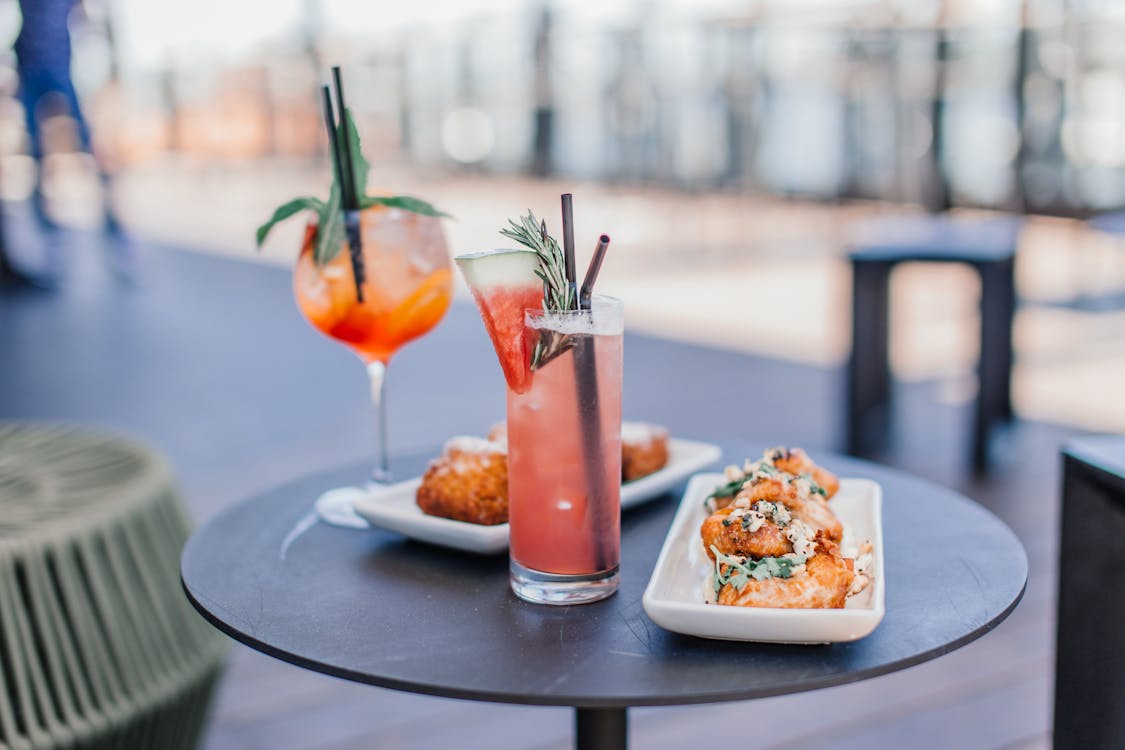The right drink can make a meal taste even better. But many people don’t know there’s an art to pairing drinks with food. Just as different foods can be paired together to create a delightful dining experience, so too can different drinks be paired with various dishes to enhance the flavor of both. Understanding its principles is key to becoming an expert on pairing drinks with meals. Once you know what to look for, it becomes easy to pair the right drink with the right dish every time.
So what are the principles of food and drink pairing? There are quite a few, but some of the most important ones are:
Match Intensities
When pairing drinks with food, it’s important to match the two intensities. This means selecting drinks with similar sweetness, acidity, bitterness, and saltiness levels. For example, if you’re serving a sweet dessert, you’ll want to select a sweet drink to pair with it. Likewise, if you’re serving a sour or acidic dish, you’ll want to select a drink with a corresponding acidity level. And if you’re serving a salty dish, you’ll want to select a drink with a salty flavor.
Another thing to keep in mind when matching intensities is the body. You generally want to pair light-bodied drinks with light-bodied foods and heavy-bodied drinks with heavy-bodied foods. With an ice maker by GEVI, you can also try creating variations of your drinks – for example, a lighter version to pair with light-bodied foods and a heavier version to pair with heavy-bodied foods. An ice maker allows easy customization and experimentation with your drinks, making it even easier to find that perfect pairing.
Choose Flavors That Compliment Each Other
Another principle of food and drink pairing is choosing flavors that complement each other. When selecting drinks to pair with your meal, try to find flavors that will work together well and enhance the taste of both the food and the drink. For example, if you’re serving Indian food, you might want to choose an Indian beer like Kingfisher or an Indian liqueur like Tandoori Gin. These drinks will have flavors that complement the spices in Indian food and add an extra layer of flavor to the meal.
Similarly, if you’re serving Italian food, you might want to choose an Italian wine like Chianti or Barbera. These wines will have flavors that complement the herbs and spices used in Italian cuisine and add an extra layer of flavor to the meal.
Pay Attention to Strength and Acidity
To be a successful food and drink pairing expert, it’s essential to understand the principles of strength and acidity. These two concepts are among the most important when creating harmonious combinations of drinks and dishes.
Strength is basically how intense a flavor is. You generally want to pair strong-flavored drinks with strong-flavored foods and light-flavored drinks with light-flavored foods. For example, if you’re serving a spicy dish, you might want to choose a strong beer like IPAs or an intense red wine like Zinfandel. And if you’re serving a delicate fish dish, you might want to choose a light white wine like Pinot Grigio or Sauvignon Blanc.
Acidity is another essential factor to consider when pairing drinks with food. Acidity gives drinks their tartness or sourness, and it can be used to balance out flavors when pairing drinks with food. For example, if you’re serving a rich and fatty dish, you might want to choose an acidic drink like lemonade or lime juice to help cut through the fat.
Think About Texture
Regarding food and drink, the texture is just as important as flavor. In fact, in some cases, it can be even more critical. This is because the texture of food or drink can affect how it tastes and how it feels in your mouth. And when it comes to pairing drinks with food, you want to ensure that both the taste and the texture of the two matches up well.
There are three types of textures: smooth, crunchy, and creamy. You want to pair foods and drinks that have similar textures together. For example, if you’re serving a crunchy salad, you might want to choose a light beer or soda like Sprite or 7-Up. And if you’re serving a creamy dessert, you might want to choose a rich and heavy liqueur like Baileys Irish Cream.
These are just a few of the principles behind pairing drinks with food. But once you understand these principles and start experimenting with different flavor combinations, it becomes easy to pair the perfect drinks with your meals every time. So go ahead, try out some new combinations and become an expert on pairing drinks with food in no time.
Published by HOLR Magazine.




